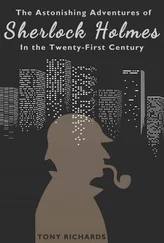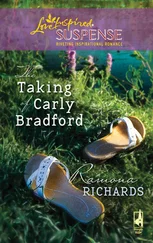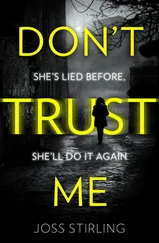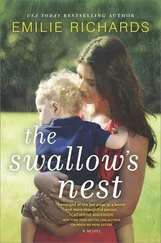You often have spatter and workings beneath your paintings – tea stains like scar tissue, paint running out of the frame.
‘A lot of that’s from Velázquez. I’ve got a picture somewhere where he shifted the edge so that most of this surface is literally raw, and Bacon did that too – raw canvas he then drew on top of. I like the idea that the material of the canvas itself becomes part of the image – you’re not just using the surface as something to cover up. You see the stain where I’ve painted this here? The oil that’s gone into the paint has gone into the paper. I’ve tried to replicate that in paintings so many times because I think it shows a sort of present. You see where the paint has slightly lifted off the paper there?’
You’re celebrating the process, then, embracing the canvas for what it is and the oily paint likewise.
‘I’m trying to get inside the mechanics of what paint is. I want paint to do something that only it can do. I know how to slide paint; how to put it on dry. I go through phases of wanting to use a lot of oil and slide the whole thing, really wet and then other times see the benefits of dragging dry paint over dry paint – the way it picks up the light slowly.’
The paint projecting to meet you.
‘An unkempt surface. We live in a time where a lot of things are hermetically sealed – I like it when I activate a surface and that surface is unique, it can’t be replicated in any way. I think that’s very human, that interest and need.
I was reading recently about Leonardo drawing a mother and child, how it took him two years to do it. Today, hardly any artist working, apart from Frank Auerbach probably, spends two years making a drawing. Our ability as humans to physically move faster hasn’t changed from Leonardo’s time; if you’ve got one stick of charcoal or Conté crayon or whatever, the ability to make a drawing hasn’t really shifted, so I think it’s interesting that art’s shifted according to the necessity for human speed – maybe that’s why the majority of art now isn’t made over a long period of time.’
Is your work exceptional in regard to the time you spend on it?
‘Yes, I think so. Lucian Freud, Frank Auerbach – there are artists about who spend a lot of time on work. I don’t think there are a lot of people who’d choose to spend a lot of time on their own in a room, to be honest – not like this. I can spend three months mixing colours. Just mixing colours. Every day. And that’s before I’ve even got going. A lot of people don’t want to spend their days doing that.’
But you do.
‘I realised that I wanted to do this very young. I knew I would be labouring over making one piece and that what I wanted to do took a long time and I felt a kinship with people like Auerbach who goes to the studio every day, the same thing. It can seem very dogmatic but at the same time you have to stay in that painting space – if you want to make paintings you have to be in front of a painting by and large – unless you’re Jeff Koons and you get eighty people making them – if you want that one-on-one, Bacon-esque battle with the surface, you’ve got to stay inside a room … and you don’t really need a lot of other stuff around you; you need a bit of human contact so you don’t go mad, but actually it can be just a coffee with someone, a conversation on the telephone – enough contact so you’re linked but not so much that it consumes and distracts you. The Van Gogh letters at the RA recently were really interesting for that reason because Theo offered exactly the valve you need. Vincent just needed to get it out, to say, “I’m not completely isolated; I’m making this work and this is the progress,” and his brother would say, “Okay, great. Send me some drawings.” It was enough, a long piece of elastic so Vincent was out there but he wasn’t totally on his own. *
‘I used to get frustrated about painting, the fact that you’d make one painting and it’s just one and can only exist as that, whereas a lot of my friends were doing photography, what seemed a more versatile medium because it could exist in all different places, but now I feel completely different about that; I like that you make this singular object and it’s almost like a human performance – the trace of it. When you make a painting, every single bit of that process is in the document that’s left. It’s like speech almost, a collection of speech, so over the year of making a painting you’ve got a year of collected experience on the surface and that, for me, is an incredible document, and so to experience the work properly you have to see it in the flesh.
The Van Gogh show was incredible to see. The work that you’ve looked at in books a lot and think you know very well – some things are a bigger scale than you thought they were and the drawings are suddenly alive in the flesh.
‘The experience of having your body in front of the piece of work, I think that’s an entirely different thing from a reproduction, obviously.
If you stand in front of a great de Kooning you literally stand where he made that work. You can’t do that in another medium – you can’t do that with music. Even in writing, when you read a printed book, it transforms you and takes you somewhere else but you’re not actually in the creative moment, and I think painting is the closest you can get – apart perhaps from performance art – the closest to creation, if you like.’
• • • • •
How far do you look ahead and plan your future work?
‘Work comes out of work, I think. I’ve got certain aims as to where I want the work to go – this marriage between abstraction and realism, this space that oscillates between those two things. Certain artists couple that and make a dialogue between them. I’m not near it. I’m trying to get near it but I’ve learnt from doing paintings over the years that that’s a journey you have to accept. You can’t get there easily; you make jumps and then plateau a bit and then make another jump and then you’ve got to ride the plateau and when it starts to go, that’s when you’ve got to be brave and really push. Sometimes I’ll be in a painting session and I’ll completely trash the painting.’
Do you then try and get it back to where it was or work on with what you’ve got?
‘I work with what I’ve got. I know I’ve got to ride it – you’re in a game at that point and you’ve got to try and pull the strings because I try to make marks and each mark is like the way you play a note – you have to decide how you’re going to play it – but when you’re really on form or you’re really in it you don’t even think about the way you’re playing it, you just play. Sometimes you’re just awful and you say, “None of this works,” but then, often, you can turn a corner and, because it really doesn’t work, you’ll make a huge leap because, “Fuck it. I might as well try this and this.” You do two or three things and then suddenly you think, “There’s something in that.”
The mixing of the colours beforehand gives you the ability to get to that space.’
You’re grounded by that.
‘I know I’ve got a sort of safety net. If all else fails I can scrape it all down and just panel-in that tone and it will smooth that side of the neck, or whatever, but the best bits of my paintings usually come out of mistakes. A sort of desperation; it’s like driving and getting lost, not having a map and going another way and then, suddenly, you’ve got to the place you wanted to get to but you’ve gone by a different route.’
• • • • •
The ground floor of the studio consists of a single open room stretching from concertina doors at the front to multi-paned windows at the back. Jenny’s drawing studio takes up about a quarter of the floor space – a curtain of clear plastic sheet hangs down to divide this portion off and contain the warmth of two electric fan heaters which buzz and tick beside us now as we stand, surrounded on three sides by large charcoal drawings of mother and child. Inspired by Leonardo da Vinci, *each cartoon is over-drawn to depict multiple scenes, like a triple-exposed film – the figures frozen in three acts. My eyes pick up and follow a line, a leg or a hand, and then recognise the rest of the drawing to which it belongs before skipping over to another detail or action. It’s quite disorientating and in these moments the babies seem to be multi-limbed and flailing … and I realise, standing there, how quickly I’ve taken for granted how mind-blowing Jenny’s work is because I’m describing it as disorientating and hypnotic when what I should be telling you is what it’s like to stand with an artist in the space where she creates work that I imagine would delight the pillars of the Renaissance. It’s shock and awe. It’s awesome and very moving … and I don’t want to jump ahead and spoil the end but I wasn’t able to revisit Jenny after this meeting and that aspect of this chapter – it being a unique four-hour encounter – means the details are rendered rich and vivid in my mind. We got a lot done, talked and walked around before the work, peered close where the paint became a livid landscape and smelt of sour gummy turps and stood back where the apparently disparate shards and pocks of paintings focused to form these remarkable wholes. We drank tea. We spoke about Duncan Jones’s film Moon, W.G. Sebald’s De Emigrés and I told Jenny about G.K. Chesterton’s essay ‘A Defence of Skeletons’ *and then it was over and I was back out on the street and everything was prosaic by comparison for a long time afterwards, the focus and colour lost – as if I’d been drinking tea with a phoenix and now had to go back to rubbing two sticks together.
Читать дальше












